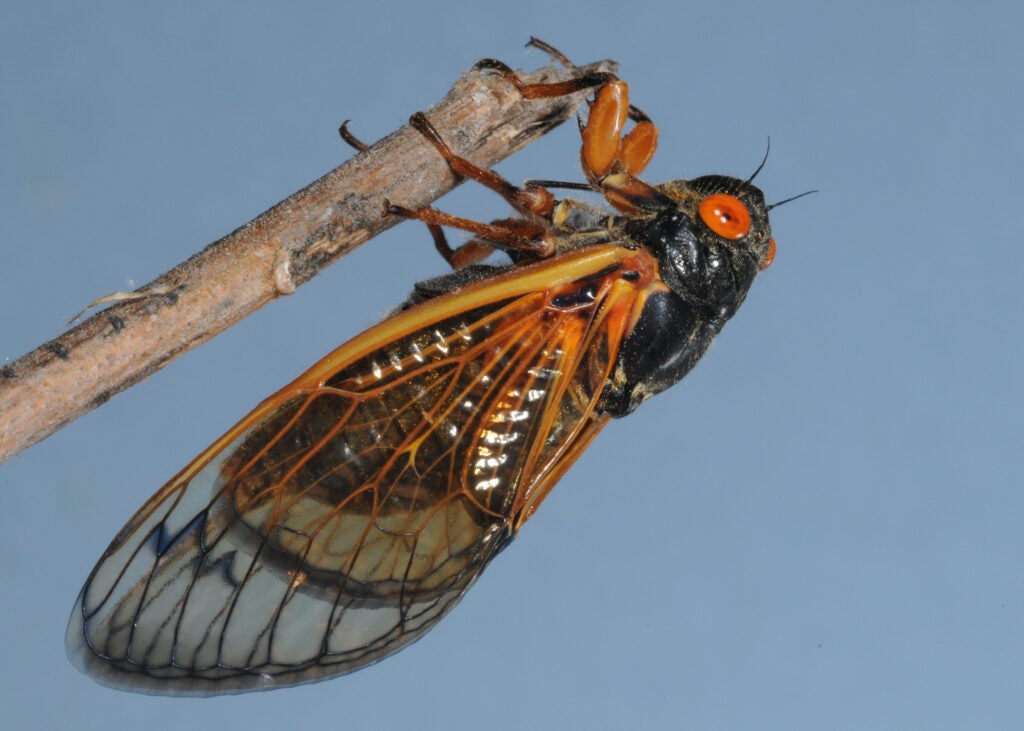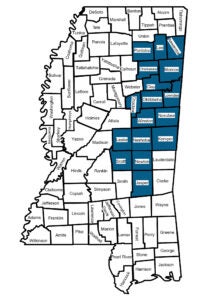2024 is a year for periodical cicadas
Published 1:46 pm Monday, March 25, 2024

- PERIODICAL -- Periodical cicadas occur only in eastern North America, and their emergence is one of the rarest natural phenomena in the insect world. (Photo by MSU Extension Service/Blake Layton) Alt text -- A black, winged insect has red eyes and markings.
By Bonnie Coblentz
MSU Extension Service
The South’s natural background music of the summer will start as soon as cicadas, known for their loud songs, emerge across parts of the state.
Blake Layton, entomologist with the Mississippi State University Extension Service, said Mississippi is home to at least 24 types of cicadas. These are classified as either annual or periodical cicadas.
“There are about 20 species of annual cicadas in Mississippi, and they vary considerably in size, appearance and especially sound,” Layton said. “Although annual cicadas occur every year, it takes them 2 to 5 years to complete a generation. Generations overlap, so some adults emerge every year.”

MAP — Brood XIX of the periodical cicadas will emerge this year starting in April in parts of about 17 northeast Mississippi counties. (Submitted illustration)
Alt text — Several counties are highlighted on a map of Mississippi.
Annual cicadas are found across the state and are big, tough-bodied insects about an inch long. They are greenish insects with large eyes and transparent wings that fold alongside their bodies.
Although annual cicadas can be found throughout the state every year, periodical cicadas emerge every 13 years and only in certain areas. 2024 is one of those years that Brood XIX periodical cicadas, also known as the Great Southern Brood, will appear. These cicadas look dramatically different, with red eyes, black bodies and orange-veined wings.
“Brood XIX is the largest of all broods, with cicadas emerging in parts of 15 states, including Mississippi, but they will only be found in about 17 counties on the northeast side of Mississippi,” Layton said.
Periodical cicadas occur only in eastern North America, and entomologists say their emergence is one of the rarest and most amazing natural phenomena in the insect world. Broods of 17-year cicadas occur in more northern areas of this range, while the South has 13-year cicadas.
“There are only three broods of 13-year cicadas in the world, and Mississippi is the only state where all three broods occur,” Layton said.
These periodical cicadas will be 13 years old when they emerge. Before this year, they have been living underground as nymphs, feeding harmlessly on the roots of hardwood trees. The males sing to attract mates.
“Individual cicadas can sing pretty loudly, but population densities can exceed 1 million cicadas per acre, and the combined songs of this many cicadas can drown out backyard conversations,” Layton said.
After this year’s Brood XIX emerges, Brood XXII will emerge in the southwest corner of the state in 2027. Brood XXIII will emerge in much of western Mississippi in 2028.
The actual timing of the emergence of Brood XIX periodical cicadas is weather dependent, but it will likely begin around the end of April and extend through most of May.
“Periodical cicadas are an amazing natural phenomenon that only occurs in the eastern United States,” Layton said. “Although they are largely harmless, periodical cicadas can cause an unusual type of damage to fruit and ornamental trees.”
Layton said female periodical cicadas lay their eggs in pencil-sized twigs of hardwood trees, and the twigs can break at these scars. This can leave 8- to 12-inch sections of broken twigs hanging in trees.
“Although this twig-flagging can be extensive, it causes little lasting harm to forest trees, but it can potentially have short-term effects on growth and yield of small fruit and nut trees,” Layton said. “Fortunately, this problem occurs at 13-year intervals.”
The only prevention on a small scale is to cover susceptible backyard trees with insect proof netting before cicadas begin laying eggs.
For more information on the distribution of these broods of periodical cicadas in Mississippi at http://extension.msstate.edu/





